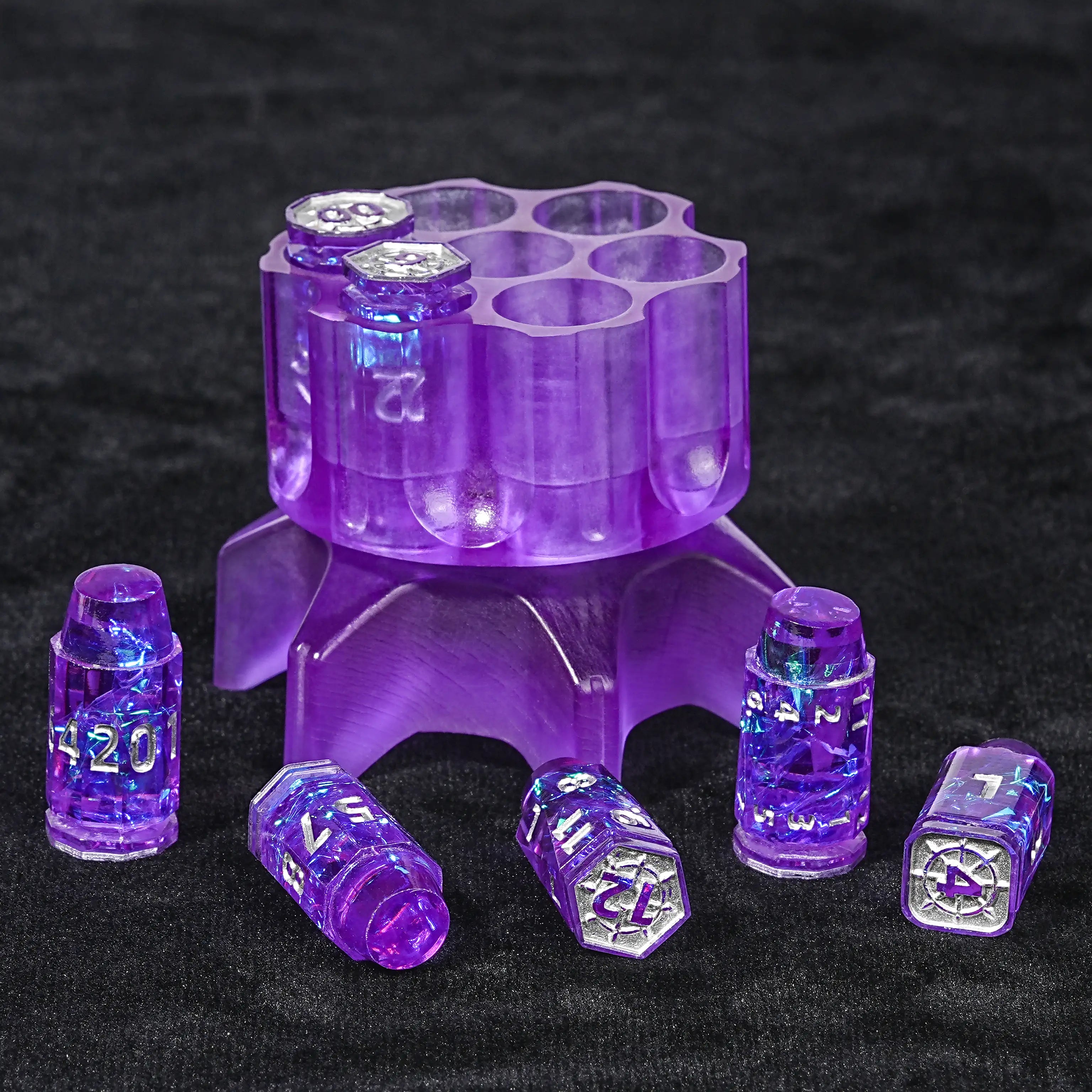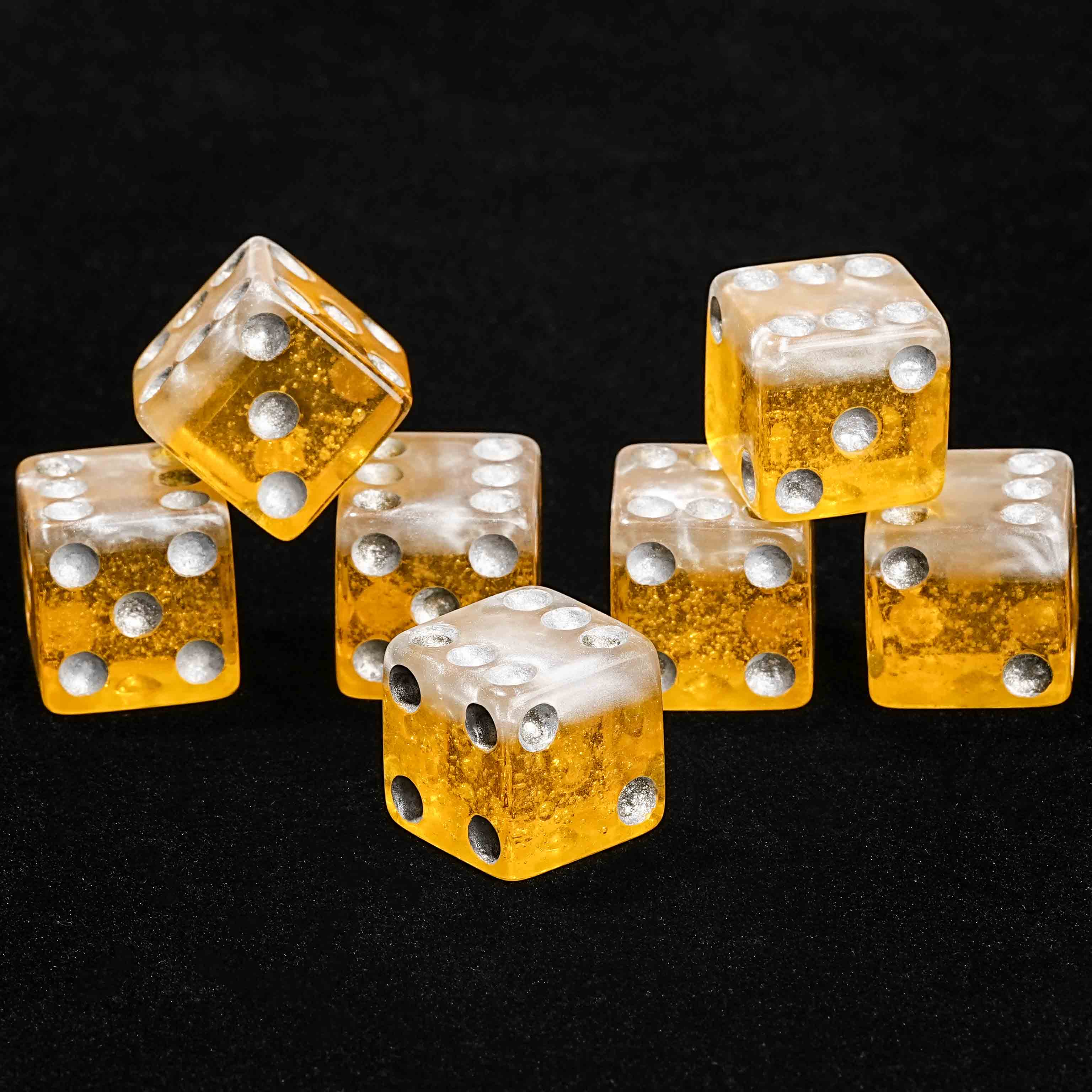Material Selection for Gemstone Dice: Creating a Unique and High Quality Rolling Experience
Gemstone dice, with their exquisite appearance and unique feel, have become increasingly popular among dice collectors and board game enthusiasts in recent years. As a special design product combining gemstones and dice, it not only has high value in terms of aesthetics, but also brings different experience to players due to the special nature of the material. However, the choice of material is crucial in making a high-quality gemstone dice. In this article, we will take an in-depth look at several materials commonly used for gemstone dice, as well as their unique advantages and challenges in dice making.

1. Natural Gemstones: The Ultimate Luxury Choice
Natural gemstone materials are the most advanced choice for making gemstone dice. Often sourced from natural minerals, these gemstones are finely cut and polished and are capable of stunning color and luster. Common natural gemstone materials include:
-Amethyst: Known for its deep purple color and transparent texture, amethyst is one of the very popular dice materials. The purple luster is able to reflect fascinating colors in the light, adding a sense of mystery to the dice.

-Turquoise: Often with a vivid blue-green color, this gemstone's natural texture and color make each dice unique. The natural markings and cracks of turquoise also give the dice their unique beauty.

-Sapphire and Ruby: These two stones are often used to make high-end dice, especially in collections that demand luxury and high quality. Their saturated colors and hardness are perfect for making durable dice.

Using natural gemstones for dice not only enhances the quality of the dice's appearance, but also has a high collector's value. However, natural gemstones cost more and the production cost increases due to the limited mineral resources. As a result, natural gemstone dice are usually more expensive and suitable for players or collectors who are looking for the ultimate experience.
2. Synthetic Gemstones: A Balance of Texture and Price
Artificial gemstones (also known as synthetic gemstones) are synthetic gemstone materials that are less rare and unique than natural gemstones, but they are usually more controllable and less expensive. These gem materials are usually produced by high temperature and pressure or other modern technological means and have similar appearance and properties to natural gemstones.
-Artificial Sapphire: Artificial sapphire has a nearly identical appearance to natural sapphire, is highly transparent and hard, and is far less expensive than natural sapphire. It is often used to make high-quality dice for players who want the look of a gem but don't want to incur the high cost.
-Glass Synthetic Gemstones: Some manufacturers use specialty glass materials to simulate the appearance of natural gemstones. While these gems are not as hard as natural gems, they can be very realistic in appearance and are very affordable for the masses of players.

The advantage of synthetic gemstone dice is that they offer good value for money, while also rivaling natural gemstones in appearance. Moreover, due to the controllability of the production process, they are usually more uniform in color and transparency, making them suitable for mass production.
3. Resins and composites: diverse design possibilities
Resins and composites are a common class of materials used in dice making, especially in modern design. As technology advances, more and more gemstone dice are using these materials to simulate gemstone effects. The advantage of resins and composites is that they can produce very intricate and beautiful designs at a low cost.
-Resin Dice: By mixing colored pigments with clear resin, manufacturers are able to create colorful dice. These resin dice can have tiny sequins, metal powders or small decorations added to them, giving them not only a jewel-like visual effect, but also a very smooth and comfortable feel.

-Composite Dice: Composites are usually made up of multiple layers of different materials, such as resin mixed with metals and minerals to achieve different textures and visual effects. Composite dice are stronger and more durable, and can create unique effects such as iridescent color gradients or metallic sheens.
Resin and composite dice are usually less expensive than natural or synthetic stones, but they still provide a desirable look and feel. Resin and composite dice are definitely a good choice for those players who want to buy a cost-effective product.
4. Metal Inlay and Decoration: Enhancing the Uniqueness of Gemstone Dice
Many gemstone dice not only put a lot of thought into the materials themselves, but also add to their aesthetic appeal through metal inlays and decorations. By inlaying metallic elements (e.g. copper, silver, gold, etc.) into gemstone dice, it is possible to create a mixture of material



Leave a comment
This site is protected by hCaptcha and the hCaptcha Privacy Policy and Terms of Service apply.